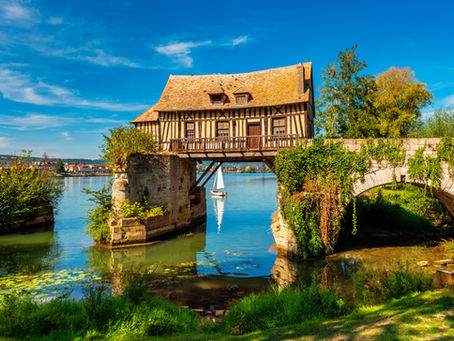top of page


CHRISTIAN & WOMEN'S FICTION AUTHOR
M. L. Bull
INSPIRATIONAL RELIGIOUS FICTION
Touching Hearts One Story at a Time . . .
WRITING BLOG
THE BRAINSTORM
TIPS, TRICKS, & "OUT-OF-THE-BOX" IDEAS FOR FICTION WRITERS

Category Menu
Latest Posts






Search


Point-of-View: The Eyes of the Story
If you previously recall, point-of-view was one of the top story elements that I went over in my six essential story elements blog post. This particular element for short stories or novels is important for a couple of reasons; but primarily, point-of-view can be thought of as the eyes of the story when it comes to writing fiction. Just think about how we use this term when not talking about fiction. Point-of-view is when one makes an effort of seeing things from another's p
M.L. Bull
24 hours ago3 min read


The Emotional Landscape: Creating Impact for Readers to Feel the Story
Whether through paintings, novels and books, news and journalism, or music, different types of creative stories can be powerful works of art and have emotional impact on the seer, reader, or listener. Although writers use a pen, pencil, or computer instead of a paintbrush, writing can be similar to painting a portrait for readers to imagine and behold with their eyes when writers create imagery in their short stories and books. One episode from the 1960s western Bonanza cal
M.L. Bull
Oct 246 min read


External Conflict: 7 Main Types of Story Conflict
Conflict is one of if not the most important story element in a short story or novel because it's what helps keep readers engrossed within stories and books. Similar to plot, conflict is an engine that moves a story forward. After all, if nothing is going on and there's nothing to overcome, there's no story to tell. External conflict is the obstacles and complications outside of characters in their story world, such as an altercation between two opposing attorneys, a fore
M.L. Bull
Oct 235 min read


External Conflict: 6 Outside Forces in a Story World
External conflict is the impact of outside forces that come against characters in a story. There are a number of different types of conflict, obstacles, and challenges characters could face during the plotline, but specifically there are six forces that characters are more than likely to deal with in some way or another. These include natural disasters or storms , supernatural or evil spirits , governments or institutions , people or villains, animals or creatures, and socia
M.L. Bull
Oct 156 min read


Internal Conflict: The Inner World of Characters
In previous blog posts, I've discussed the four operations in characters, and the generic and complex emotions characters feel when...
M.L. Bull
Sep 266 min read


Internal Conflict: The Emotions Characters Feel & How to Show Them
Internal conflict is the inner battle within characters when they collide with external forces. Character emotion is one of the most important aspects of all fictional characters whether they're humanlike characters or animals like in the allegorical novella, "Animal Farm" by George Orwell. Emotions allow writers to impact their readers and cause them to feel something and relate and connect with their characters. There is a wide range of emotions characters can experience; b
M.L. Bull
Sep 195 min read


Internal Conflict: The 4 Inner Operations in Characters
Let's say you're a hiker lost in a national park while being on a camping trip. You're troubled and concerned about your safety; but...
M.L. Bull
Sep 124 min read


Internal Conflict vs. External Conflict: How They Differ & How to Use Them Effectively
Imagine you're a firefighter that rushes to an emergency house fire. The burning flames and suffocating smoke of the house fire is the...
M.L. Bull
Sep 85 min read


The Anatomy of Story Structure
If writers really think about it, story structure can be similar to the functionality and foundation of different systems of the human body. There are four specific components of the anatomy of story structure that together make up the DNA of a cohesive, well-organized story. These four components include goals, characters, plot or story arcs, and scenes.
M.L. Bull
Jun 282 min read


Literary Devices: Foreshadowing & 5 Techniques
Foreshadowing is a common literary device that most seasoned writers have heard of before. It's when writers give hints of future events that are to come or will happen later within a story.
M.L. Bull
Jun 164 min read


Literary Devices: The 3 Types of Irony
As I mentioned in my previous blogpost, there's three main different types of irony: verbal, situational, and dramatic. All three of these types of irony can be used creatively within writing to either add clever wit, create suspense, or add a little humor in stories.
M.L. Bull
Jun 113 min read


Literary Devices: Irony
Irony is a literary device that can add wit and intrigue in one's writing, but it isn't commonly used as much as metaphors or similes....
M.L. Bull
May 303 min read


7 Specific Categories of Book Titles
In many ways, books are like people, as each one carries an essence of life, inspiration, and influence of its own. You know what people...
M.L. Bull
Mar 163 min read


Thematic Significance: What's Your Story's Message?
Thematic significance is the moral, statement, or universal truth an author is conveying to their readers through their short stories,...
M.L. Bull
Mar 132 min read


Theme: What's Your Story's Idea?
Theme is many times associated with the message of stories based on the terminology we're familiar with from writing essay and research...
M.L. Bull
Mar 72 min read


Literary Devices: Adding Voice
Voice is one of the most distinctive features within fiction and from authors' different writing styles alone. There are certain literary...
M.L. Bull
Feb 274 min read


Literary Devices: Adding Color
Like artists who paint on canvases, writers can also create beautiful images and pictures by the use of their words. Aside from literary devices that add style and add voice, there are particular literary devices that can be beneficial for writers to add color to their writing, create intrigue, and engross their readers in their short stories and novels. Some of these include the following list of literary devices below. Literary devices that add color: Similes Metaphors Pe
M.L. Bull
Feb 203 min read


Literary Devices: Adding Style
Literary devices are writing tools and techniques that can help writers intrigue their readers more into their short stories, books, or...
M.L. Bull
Feb 183 min read


SETTINGS - Part 2: Interior vs. Exterior Settings and Subtle Details
Interior and exterior are the two different types of settings within story writing. As I mentioned in my previous post of worldbuilding,...
M.L. Bull
Sep 26, 20248 min read


SETTINGS - Part 1: 4 Aspects for Creating Settings in a Story or Novel
As I mentioned in a previous post, settings help to "set the scene" and create a believable story world or environment within our stories...
M.L. Bull
Sep 5, 20247 min read
Blog Posts
Archive
bottom of page